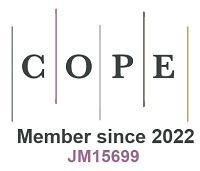REFERENCES
1. Foote CS. Mechanisms of photosensitized oxidation. There are several different types of photosensitized oxidation which may be important in biological systems. Science. 1968;162:963-70.
2. Chen B, Wu LZ, Tung CH. Photocatalytic activation of less reactive bonds and their functionalization via hydrogen-evolution cross-couplings. Acc Chem Res. 2018;51:2512-23.
3. Chen R, Wang Y, Ma Y, et al. Rational design of isostructural 2D porphyrin-based covalent organic frameworks for tunable photocatalytic hydrogen evolution. Nat Commun. 2021;12:1354.
4. Meng QY, Zhong JJ, Liu Q, et al. A cascade cross-coupling hydrogen evolution reaction by visible light catalysis. J Am Chem Soc. 2013;135:19052-5.
5. Baptista MS, Cadet J, Di Mascio P, et al. Type I and type II photosensitized oxidation reactions: guidelines and mechanistic pathways. Photochem Photobiol. 2017;93:912-9.
6. Baptista MS, Cadet J, Greer A, Thomas AH. Photosensitization reactions of biomolecules: definition, targets and mechanisms. Photochem Photobiol. 2021;97:1456-83.
7. Chen Y, Lu L, Yu D, Zhu C, Xiao W. Visible light-driven organic photochemical synthesis in China. Sci China Chem. 2019;62:24-57.
8. Bonesi SM, Manet I, Freccero M, Fagnoni M, Albini A. Photosensitized oxidation of sulfides: discriminating between the singlet-oxygen mechanism and electron transfer involving superoxide anion or molecular oxygen. Chemistry. 2006;12:4844-57.
9. Chen D, Xu Q, Wang W, Shao J, Huang W, Dong X. Type I photosensitizers revitalizing photodynamic oncotherapy. Small. 2021;17:e2006742.
10. Greer A. Christopher Foote’s discovery of the role of singlet oxygen [1O2 (1Δg)] in photosensitized oxidation reactions. Acc Chem Res. 2006;39:797-804.
11. Arnaut LG, Pereira MM, Dąbrowski JM, et al. Photodynamic therapy efficacy enhanced by dynamics: the role of charge transfer and photostability in the selection of photosensitizers. Chemistry. 2014;20:5346-57.
12. Zhao J, Wu W, Sun J, Guo S. Triplet photosensitizers: from molecular design to applications. Chem Soc Rev. 2013;42:5323-51.
13. Zhao J, Xu K, Yang W, Wang Z, Zhong F. The triplet excited state of bodipy: formation, modulation and application. Chem Soc Rev. 2015;44:8904-39.
14. Glaser F, Kerzig C, Wenger OS. Multi-photon excitation in photoredox catalysis: concepts, applications, methods. Angew Chem Int Ed Engl. 2020;59:10266-84.
15. Zhang Y, Doan BT, Gasser G. Metal-based photosensitizers as inducers of regulated cell death mechanisms. Chem Rev. 2023;123:10135-55.
16. Karges J. Clinical development of metal complexes as photosensitizers for photodynamic therapy of cancer. Angew Chem Int Ed Engl. 2022;61:e202112236.
17. Nguyen VN, Zhao Z, Tang BZ, Yoon J. Organic photosensitizers for antimicrobial phototherapy. Chem Soc Rev. 2022;51:3324-40.
18. Michelin C, Hoffmann N. Photosensitization and photocatalysis - perspectives in organic synthesis. ACS Catal. 2018;8:12046-55.
19. Wang D, Lee MMS, Shan G, et al. Highly efficient photosensitizers with far-red/near-infrared aggregation-induced emission for in vitro and in vivo cancer theranostics. Adv Mater. 2018;30:e1802105.
20. Wang D, Su H, Kwok RTK, et al. Rational design of a water-soluble NIR AIEgen, and its application in ultrafast wash-free cellular imaging and photodynamic cancer cell ablation. Chem Sci. 2018;9:3685-93.
21. Liu K, Liu Y, Yao Y, et al. Supramolecular photosensitizers with enhanced antibacterial efficiency. Angew Chem Int Ed Engl. 2013;52:8285-9.
22. Shao L, Pan Y, Hua B, et al. Constructing adaptive photosensitizers via supramolecular modification based on pillararene host-guest interactions. Angew Chem Int Ed Engl. 2020;59:11779-83.
23. Cai X, Liu B. Aggregation-induced emission: recent advances in materials and biomedical applications. Angew Chem Int Ed Engl. 2020;59:9868-86.
24. Cao S, Shao J, Wu H, et al. Photoactivated nanomotors via aggregation induced emission for enhanced phototherapy. Nat Commun. 2021;12:2077.
25. Hu F, Xu S, Liu B. Photosensitizers with aggregation-induced emission: materials and biomedical applications. Adv Mater. 2018;30:e1801350.
26. Li J, Wang J, Li H, Song N, Wang D, Tang BZ. Supramolecular materials based on AIE luminogens (AIEgens): construction and applications. Chem Soc Rev. 2020;49:1144-72.
27. Xu S, Duan Y, Liu B. Precise molecular design for high-performance luminogens with aggregation-induced emission. Adv Mater. 2020;32:e1903530.
28. Qian W, Zuo M, Sun G, et al. The construction of an AIE-based controllable singlet oxygen generation system directed by a supramolecular strategy. Chem Commun. 2020;56:7301-4.
29. Zuo M, Qian W, Hao M, Wang K, Hu X, Wang L. An AIE singlet oxygen generation system based on supramolecular strategy. Chinese Chem Lett. 2021;32:1381-4.
30. Hu Y, Yin S, Liu W, Li Z, Chen Y, Li J. Rationally designed monoamine oxidase A-activatable AIE molecular photosensitizer for the specific imaging and cellular therapy of tumors. Aggregate. 2023;4:e256.
31. Cui L, Yu S, Gao W, Zhang X, Deng S, Zhang CY. Tetraphenylenthene-based conjugated microporous polymer for aggregation-induced electrochemiluminescence. ACS Appl Mater Interfaces. 2020;12:7966-73.
32. Li Y, Zhang D, Yu Y, et al. A cascade strategy boosting hydroxyl radical generation with aggregation-induced emission photosensitizers-albumin complex for photodynamic therapy. ACS Nano. 2023;17:16993-7003.
33. Lam KWK, Chau JHC, Yu EY, et al. An alkaline phosphatase-responsive aggregation-induced emission photosensitizer for selective imaging and photodynamic therapy of cancer cells. ACS Nano. 2023;17:7145-56.
34. Wang JL, Xia FW, Wang Y, et al. Molecular charge and antibacterial performance relationships of aggregation-induced emission photosensitizers. ACS Appl Mater Interfaces. 2023;15:17433-43.
35. Lee MMS, Yu EY, Yan D, et al. The role of structural hydrophobicity on cationic amphiphilic aggregation-induced emission photosensitizer-bacterial interaction and photodynamic efficiency. ACS Nano. 2023;17:17004-20.
36. Xing L, Wang Y, Li X, et al. A novel strategy to construct artificial light-harvesting system based on aggregation-induced emission surfactants for photocatalysis. Adv Opt Mater. 2023;11:2201710.
37. Wang Y, Ma C, Li X, et al. A novel strategy of constructing an artificial light-harvesting system based on a supramolecular organic framework for photocatalysis. J Mater Chem A. 2023;11:2627-33.
38. Kim Cuc TT, Nhien PQ, Khang TM, et al. Controllable FRET behaviors of supramolecular host-guest systems as ratiometric aluminum ion sensors manipulated by tetraphenylethylene-functionalized macrocyclic host donor and multistimuli-responsive fluorescein-based guest acceptor. ACS Appl Mater Interfaces. 2021;13:20662-80.
39. Wang P, Zhang C, Liu HW, et al. Supramolecular assembly affording a ratiometric two-photon fluorescent nanoprobe for quantitative detection and bioimaging. Chem Sci. 2017;8:8214-20.
40. Tang B, Xu W, Xu JF, Zhang X. Transforming a fluorochrome to an efficient photocatalyst for oxidative hydroxylation: a supramolecular dimerization strategy based on host-enhanced charge transfer. Angew Chem Int Ed Engl. 2021;60:9384-8.
41. Li X, Cheng D, Niu K, et al. Construction of supramolecular dimer photosensitizers based on triphenylamine derivatives and cucurbit[8]uril for photocatalysis. J Mater Chem A. 2023;11:24911-7.
42. Zhao N, Li M, Yan Y, et al. A tetraphenylethene-substituted pyridinium salt with multiple functionalities: synthesis, stimuli-responsive emission, optical waveguide and specific mitochondrion imaging. J Mater Chem C. 2013;1:4640-6.
43. Li X, Gu J, Zhou Z, Liu W, Gao J, Wang Q. Precise control for the aggregation and deaggregation with the aid of a tetraphenylethylene derivative: luminescence modulation and sensing performance. Dyes Pigments. 2020;172:107844.
44. Samanta SK, Maiti K, Manna SK, et al. An aggregation-induced emission (AIE)-active fluorescent chemodosimeter for selective sensing of hypochlorite in water and solid state: Endogenous detection of hypochlorite in live cells. Dyes Pigments. 2021;196:109758.
45. Wang GB, Wang YJ, Kan JL, et al. Construction of covalent organic frameworks via a visible-light-activated photocatalytic multicomponent reaction. J Am Chem Soc. 2023;145:4951-6.
46. Jiang M, Wang Y, Liu H, Yu S, Niu K, Xing L. Construction of a novel pyrene-based two-dimensional supramolecular organic framework and the selective regulation of reactive oxygen species for photocatalysis. J Mater Chem A. 2024;12:4752-60.
47. Murugesan K, Sagadevan A, Peng L, Savateev O, Rueping M. Recyclable mesoporous graphitic carbon nitride catalysts for the sustainable photoredox catalyzed synthesis of carbonyl compounds. ACS Catal. 2023;13:13414-22.
48. Lian P, Wang K, Liu H, et al. Reacting molecular oxygen with butanone under visible light irradiation: a general aerobic oxidation of alkenes, sulfides, phosphines, and silanes. Org Lett. 2023;25:7984-9.








